Two weeks ago I offered free Landing Page MVP feedback to our Customer Development Labs community. What I saw was 40+ beautifully designed pages but…
Virtually every founder was making the same 2 mistakes.
Those mistakes were leading to lower conversion rates.
Mistake #1: Product vs Problem
Of course, you’re selling a product, but here’s the thing about products…
Customers don't buy products. Customers buy solutions to problems. Click To TweetWe know your customers will buy your product because it will create a change for them – solve a problem for them, change their emotional state, etc.
The mistake founders make is that you “know” the above to be true, but your landing page doesn’t reflect it.
When your landing page MVP talks about your product more than the problem…that’s a problem.
Take a look at the video above for a pile of examples from real landing pages.
The Fix
To solve any Product vs Problem mistakes, all you need to do is:
Lead with the problem.
When the headline of your landing page speaks directly to your customers’ problems, they’ll immediately buy-in:
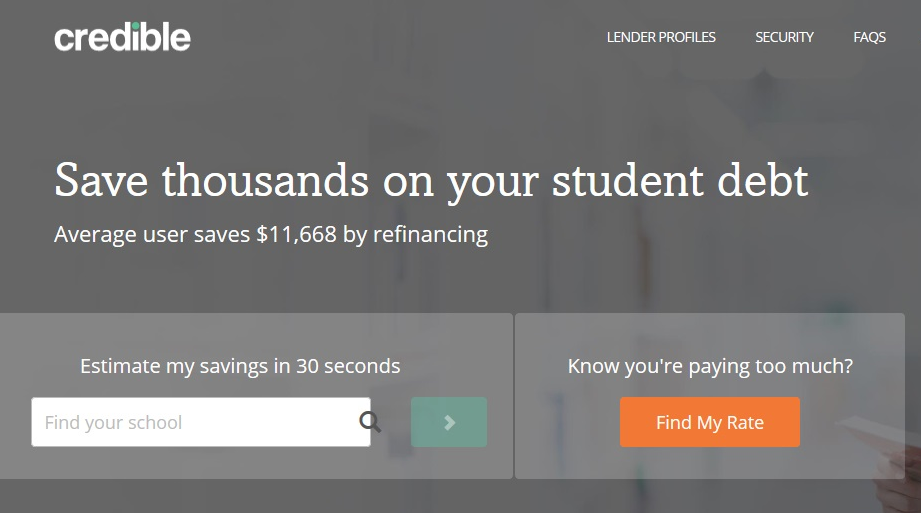
Once customers know you’re going to solve their problem, you’ll have all the time in the world to tell them about your product.
Next Steps
To figure out what problems your customers are trying to solve, and more importantly, the words they use to describe those problems, you need to talk with them via 1-on-1 interviews.
In fact, the words customers use to describe their problems will be the basis of your headlines:
Your customers will write your landing page copy for you.
For details on customer interviews see my articles on:
If you want some help figuring out where/how to find customers to interview, check out the FOCUS Framework Exercise 1.4: Where are Your Early Adopters?
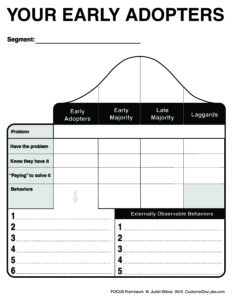 That exercise will show you exactly where to find customers who are willing to be interviewed, and how to approach them.
That exercise will show you exactly where to find customers who are willing to be interviewed, and how to approach them.
If you already know the words your customers use to describe their problems but want help converting them into effective landing page copy, check out FOCUS Exercise 2.4: Offer Design.
The Offer Design exercise will help you transform your interviews into emotionally-driven landing page copy, that converts.
Mistake #2: Flying Car Syndrome
The 2nd most common mistake I see is landing pages that promise to solve several different types of customer’s problems, and in doing so, solve none of them.
I call this the “Flying Car Syndrome.”
 Flying cars are an amazing idea, and have existed for decades – so why don’t we use them?
Flying cars are an amazing idea, and have existed for decades – so why don’t we use them?
Because flying cars suck.
By trying to be too many things, for too many people, the flying car is simultaneously a crappy car, and a crappy plane.
What you don’t realize is that by building a landing page that appeals to more than one type of customer, you’ve created a digital version of a flying car.
Your landing page isn't converting because you're selling to pilots and drivers at the same time. Click To TweetWatch the video above for what this looks like on real-world landing pages, so you can avoid it.
Put another way, if you know you need to lead with the problem not the product (see Mistake #1), what problem does a flying car solve?
- Helping drivers avoid rush hour traffic? Nope. Not unless they’ve got a landing strip near where they’re going to and from.
- Helping drivers save money? No. They’ll burn way more fuel keeping that hunk of junk in the sky.
- Helping pilots be able to fly more than they normally do? Yes, until they die…then no. Flying small planes is already dangerous – strapping wings to a Geo Metro is only going to make it worse.
Once you start focusing on the problem you solve for customers, you quickly realize…
Each type of customer has a different type of problem.
If you want to speak to any of your customers, you must speak to only one of your customers. One landing page, solving one problem, for one type of customer.
As soon as you start combining problems from multiple segments at once, you end up describing no one’s problems well – and turn your landing page into an “interesting idea” that no one wants <cough>flying car</cough>.
The Fix
The remedy for this mistake is simple:
Sell cars. Then sell planes.
 Start by solving a single segment’s problems. Solve that small segment’s problems in an incredible way. That small segment will help spread the word and tell your next segment, which will help spread the word with your next segment.
Start by solving a single segment’s problems. Solve that small segment’s problems in an incredible way. That small segment will help spread the word and tell your next segment, which will help spread the word with your next segment.
Eventually you’ll serve both drivers and pilots (a la Rolls-Royce) but you’ll do it with great cars and great airline engines…not with a sub-par combination of the two.
I know it feels scary to only target one customer segment. I know it feels like there’s no way that one segment is big enough for you to be able to start a successful company. I also know…
The only way to get big, is to start small. Click To TweetFacebook didn’t start as the preferred social media tool for 1 billion people around the world. It didn’t start as the preferred social media tool for the US. It didn’t start as the preferred tool in colleges. It didn’t even start as the preferred social media tool for Ivy League colleges.
Facebook started at one college…Harvard.
From there it gained traction at Ivy League schools, then colleges around the US, then the general US population, and now the world.
Facebook didn’t start trying to serve everyone. It started by serving just one.
Watch the video above for an example of how Apple followed the same path.
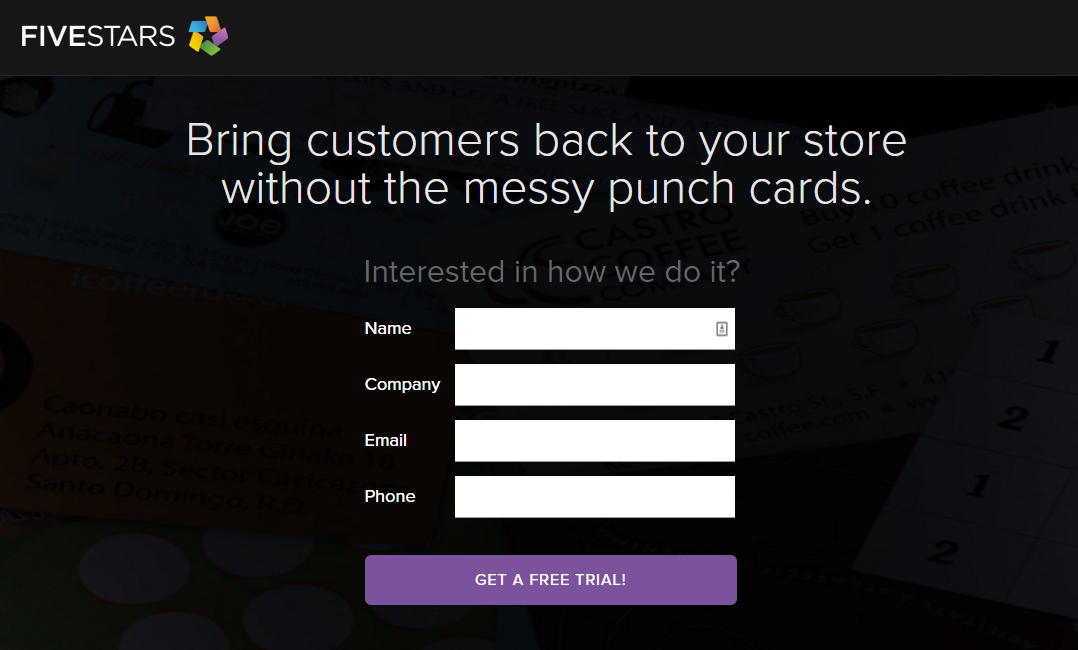
Note: for details on picking which side of a two-sided market to start with, click here.
Next Steps
To alleviate “Flying Car Syndrome”, you need to:
- Prioritize your customer segments
- Pick the single best segment to start testing with
- Create a landing page MVP just for that segment
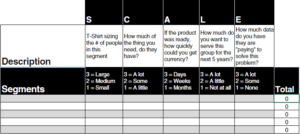 If you want help with the prioritization process, you can either use the SPA Treatment, or you can use the updated version: SCALE-ing your Segments – Exercise #1.5 in FOCUS.
If you want help with the prioritization process, you can either use the SPA Treatment, or you can use the updated version: SCALE-ing your Segments – Exercise #1.5 in FOCUS.
SCALE will help you prioritize your segments based on the factors I’ve found most important for identifying true Early Adopters within your market.
Conclusion
Creating the highest converting landing-pages possible is straight forward:
- Always lead with your customer’s problem
- Focus on just one type of customer at a time
Do that, and you’ll avoid the most common Landing Page MVP mistakes and you’ll maximize your currency.
Want More MVP Articles?
This is the 4th article in my MVP series. You can check out the others below:
- What is an MVP?
- The 5 MVPs of Product-Market Fit
- My 9 Favorite Tools for Building Landing Page MVPs
- (This one) Is your Landing Page not Converting? Here’s why.
Be sure to subscribe to get my next article: “What are Early Adopters, and Where are Yours?”

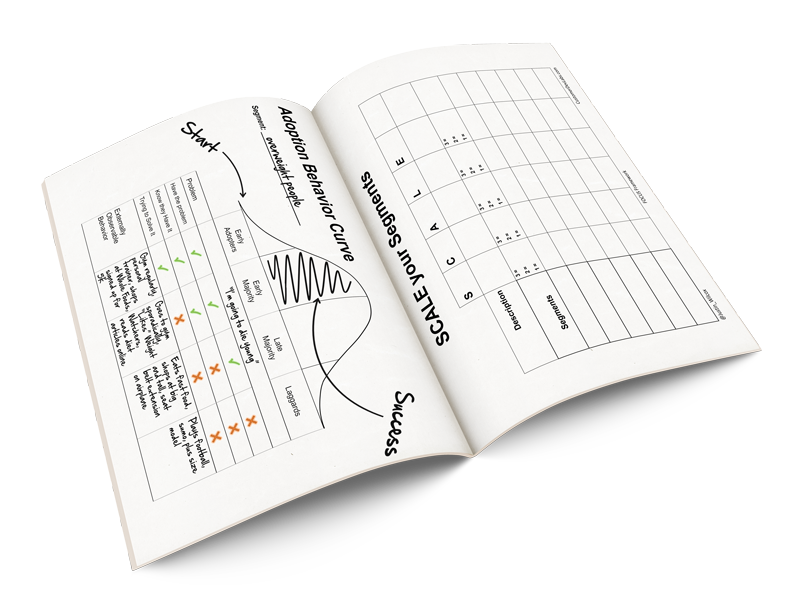


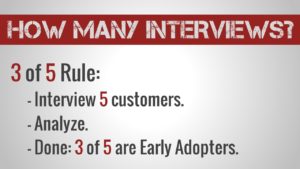

Thanks Justin, this is great. Will from Melbourne, Aus
Excellent, Justin. Thank you for this clear message. Very motivating!